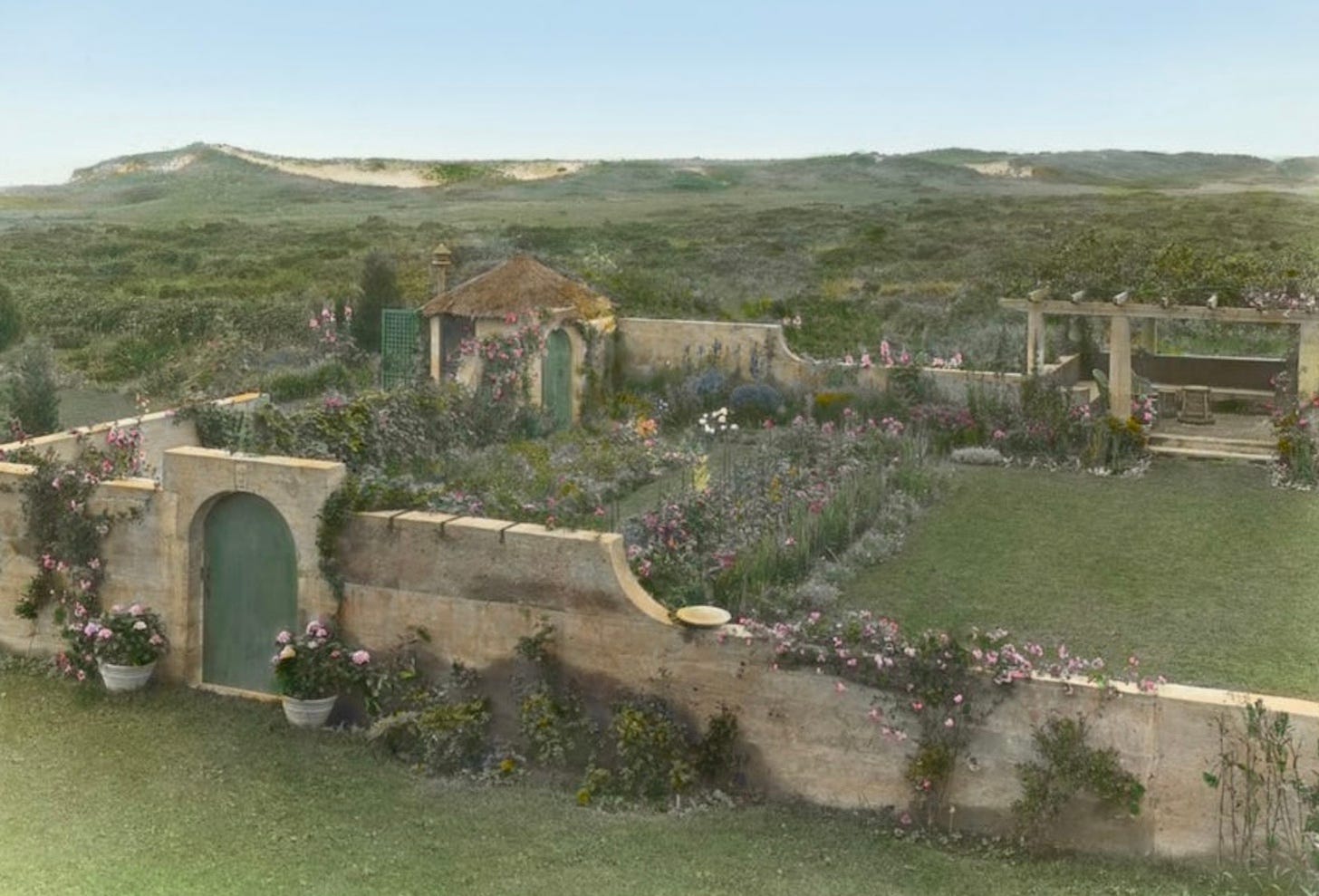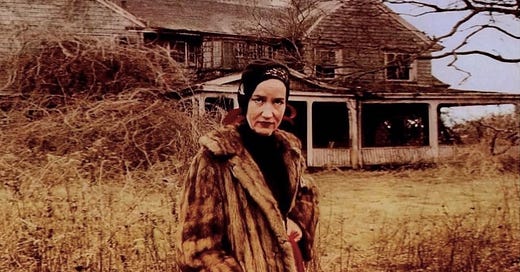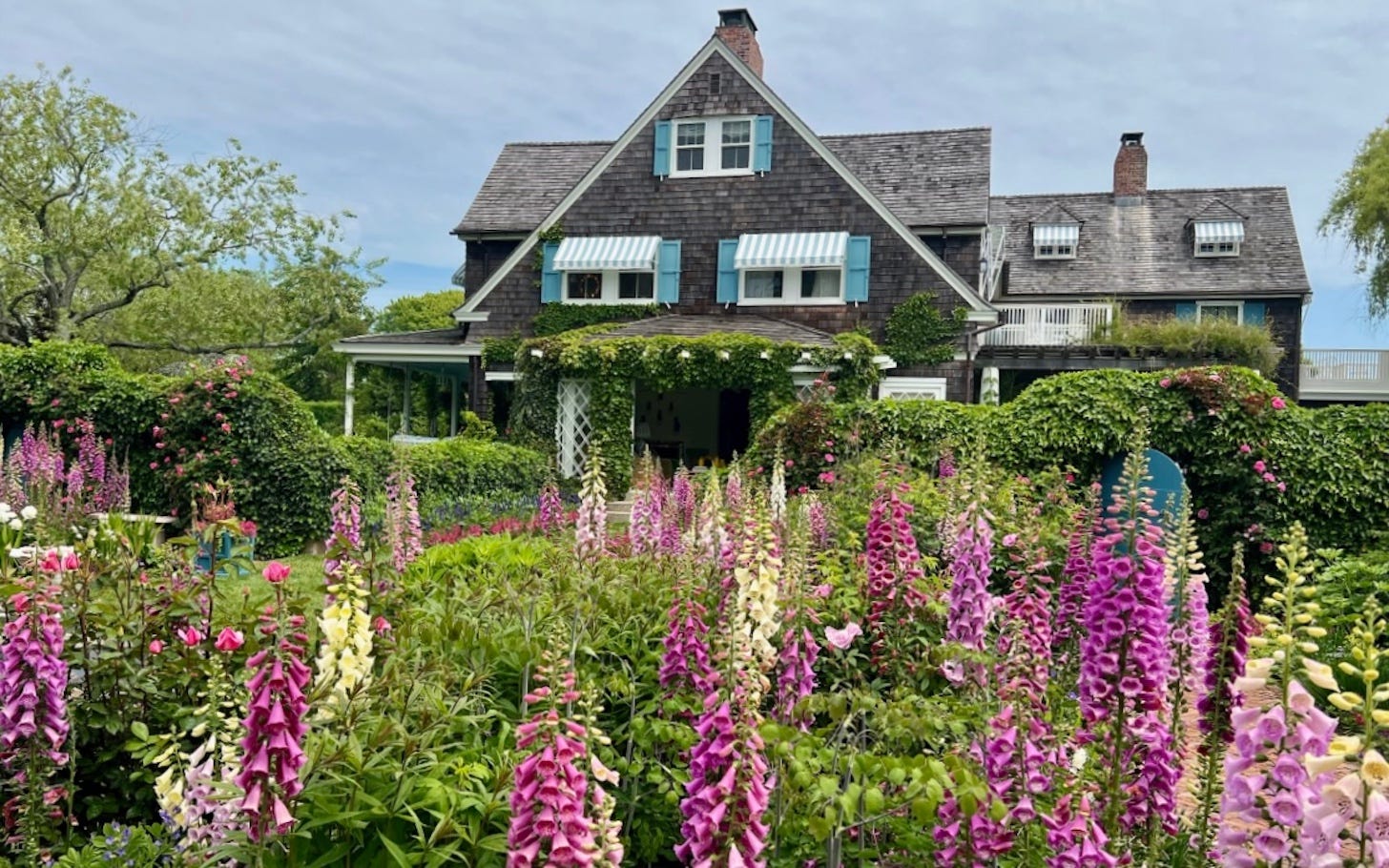A few years back, when I was going though an especially rough spell of depression, I couldn’t go to sleep at night without first taking a sleeping pill and then watching some iteration of the Grey Gardens documentaries currently out there. There are three of them: the original 1975 classic, a very lovingly put together compilation of outtake footage called The Beales of Grey Gardens, and Last Summer, a sort of hazy summery mix of Beales and Bouviers (Jackie and Lee) with some Andy Warhol thrown in. But really I mostly watched the Beales-starring, Maysles-directed documentaries. Last Summer has too much glamour, and when I was sad I didn’t want glamour. I guess I wanted the coziness and comfort of a nearly-condemned, raccoon-infested, cat pee-smelling Hamptons beach mansion, along with the aging, constantly bickering mother/daughter recluses who went with it.
I won’t go into the whole story of the Beales here, but if you haven’t seen Grey Gardens, please do! Although I have to say it’s probably not for everyone; when I watched it years and years ago with my mom she said it was good my dad was away on a work trip that night because he would have hated it, and I believe her! It can be a stressful thing to watch, and not always pretty. And yet? . . .
Grey Gardens is sad, tense (all that fighting!), and sometimes hard to watch: two women (middle-aged Little Edie and elderly Big Edie) living in a falling-apart mansion that they no longer can afford to keep together, constantly rehashing the past, surrounded by rogue animals and the odd visit from an odd friend or two (some very odd friends, there). If you’re a neat freak you’ll find yourself having to look away for a lot of the movie. If you’re a garden freak you might be sad to see what became of the once-beautiful gardens after the Beales moved in: a vine-choked, overgrown privet forest, too dark for growing vegetables or much of anything besides weeds. At one point in the film Little Edie reminisces about a scarf she lost in the “sea of leaves,” and you just know she won’t be seeing that scarf again. (Don’t worry—she has plenty more)

But it’s also somehow strangely romantic? At least to me, an introvert who also sometimes wants to crawl back into the past and stay there. The documentaries were filmed in the ‘70s but you’d never guess it by the music the Edies surround themselves with. Very dreamy broadway songs from the ‘20s through ‘50s. “Tea For Two” and “Lili Marlene” and “You Ought to Be in Pictures.” They play records on an ancient record player. They both sing. Little Edie tap dances. Both Edies always wanted to be on the stage, but had the misfortune to be born socialites instead.
Being related to Jackie didn’t help, and neither did living in the Hamptons. Drew and I drove through East Hampton last spring and it was so fancy that I didn’t even want to get out of the car. Quaint little downtown streets lined with Gucci and Chanel shops? Not for me. I get nervous even thinking about it. There’s this great scene in The Beales of Grey Gardens where little Edie goes to church, and it’s so fascinating because you hardly see her out among the general public, and she stands out like a sore thumb, even though she’s dressed pretty conservatively. Usually her outfits are wild: sweaters worn as headscarves, fishnets, short skirts, heels, lots of brooches worn in creative ways. Somehow very 1940s, but also kind of futuristic, 1980s-anticipating?
I guess that if the world rejects you and wants you to be something that you can’t be/don’t want to be, then it makes perfect sense to withdraw into a world of your own making. Even if that world is sad and sometimes lonely and boring. My depression right now isn’t so bad—usual January moods—but sometimes the world looks so bleak that it can be really tempting to fall backwards into something nostalgic and comforting. And it’s a scary time right now! A time when it really seems as though power is valued over beauty, conformity over creativity, money over goodness. I mean, I don’t want to be a recluse or to shut out the world or anything, but there’s definitely a reason I found myself watching those documentaries again last weekend.
Anyhow, maybe one of the most surprising things about the Grey Gardens story is the fact that the house is still standing, and that it’s so beautiful. Too beautiful? Maybe—the only time I got out of the car on our April Hamptons daytrip was to peek over the gate of Grey Gardens, and it’s a shock. But I’m not mad at it, and I’m just grateful that the house was even restored, considering what a wreck it was before. Seriously, thank you, Sally Quinn.
And the garden now is maybe too beautiful, too, looking like an east coast version of an English rose garden, planted in very neat (boring?) rows. The sea of leaves was long-gone when I was loitering; I could see the house! There’s pretty ivy growing up the sides of the house, too, so much tamer than the trumpet vines that were overtaking the place in the ‘70s. In the documentary Little Edie says that the city comes to cut down the vines, but that the vines always end up growing back again anyway.
“They do it to everybody,” she says. “They want everybody to be the same. They can’t have anything different . . . I think they didn’t want one little flower to grow in a strange place or something.”
When one of the directors asks her what she thinks about naming the documentary “Grey Gardens,” Little Edie doubts that her mother will go along with it since the name might confuse people. “They might think it was a movie about flowers, you know, Grey Gardens . . .”
And the documentary ends on that line, because of course it’s a movie about flowers. Just not the kinds of flowers that are typically grown in East Hampton.










Woke up thinking about this line, “a movie about flowers” and stumbled upon your essay. It really is a movie about flowers 🥲 and I can totally relate to the comfort you find it it. Those women were determined to be themselves regardless of consequences, and that’s nice to be around.
Oh, wow. I saw a parody (I guess I'll call it that) of this by Documentary Now! (Fred Armisen, Bill Hader, Seth Meyers, and Rhys Thomas.) The episode was called "Sandy Passage" and I had no idea it was based on real life! The storyline from IMDB reads: "It's 1975. Larry and Alfred Fein are making a documentary on the Van Klimptons, mother "Big Vivvy" and daughter "Little Vivvy" who live in a derelict old house. The house is in such a state they have been ordered to clean it by the city council." I will be watching the original now for sure!